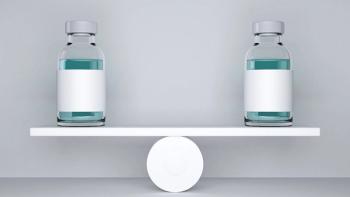
- BioPharm International-02-01-2013
- Volume 26
- Issue 2
Assessing Development Needs for Biobetters and Biosimilars
Development requirements and regulatory guidance for biosimilars and biobetters.
During the past 30 years, biotherapeutics have emerged as targeted drugs for indications such as cancer, autoimmune diseases, and hormone/enzyme disorders. Because of their specificity and generally reduced toxicity profiles, biotherapeutics have gained market share from classic small-molecule therapeutics. The invention of recombinant DNA technologies in the early 1980s as well as enhanced biomanufacturing procedures over the past several decades have driven growth, giving rise to complex drug products including cytokines, growth factors, fusion proteins, enzymes, hormones, and monoclonal antibodies (mAbs). Despite continued progress, biotherapeutic development is costly and can take up to 15 years from discovery to market with the total cost estimated to be $100 million to $1 billion per molecule (1). With many approved biotherapeutics coming off patent in the next several years, a new market for biologic products such as biosimilars and biobetters/biosuperiors is gaining ground.
Christina Satterwhite, PhD
Follow-on biologics, which include biosimilars and biobetters, are approved subsequent versions of innovator biopharmaceutical products, typically made by a different sponsor following or nearing expiration of patent protection of the innovator product. Biosimilars are follow-on biologics that have the same molecular profile as the reference product. Biobetters include modifications to the originator molecular profile with the specific aim to enhance the efficacy, thereby marketing a superior product. Biobetter companies accomplish this through chemical (e.g., polyethylene glycol [PEG]) or molecular (e.g., recombinant gene technology site-directed mutagenesis or amino acid additions) modifications with functional changes that include, but are not limited to, increased half-life, reduced toxicity, reduced immunogenicity, and enhanced pharmacodynamic effects (2).
There are an increasing number of examples of companies using biobetter strategies for improvement of innovator products. For instance, Pegasys (peginterferon alfa-2a) marketed as a biobetter by Genentech, a member of the Roche group, was re-engineered to increase the half-life relative to the innovator interferon drug product, Roferon, which was originally marketed by Hoffmann-La Roche (3). Xencor is an example of a company marketing proprietary protein engineering using its XmAb technology to enhance Fc effector function (i.e., antibody-dependent cell-mediated cytotoxicity, ADCC), and EpiVax uses in silico technologies to reduce T-cell epitopes in an effort to reduce immunogenicity.
MARKET POSITION
Several innovator biotechnology companies have made strategic decisions to produce biobetters in an effort to maintain the market share of their innovator products. For example, in 2010, MedImmune, the biologics arm of AstraZeneca, announced its strategy to develop biobetters as opposed to concentrating on biosimilars (2). Other examples of this strategy include Amgen with Neupogen (filgrastim) and Genentech, a member of the Roche Group, with Herceptin (traztuzumab). Amgen developed Neulasta (pegfilgrastim), a biobetter of Neupogen in which the originator molecule, a form of granulocyte stimulating factor, was PEGylated. Neupogen and Neulasta both have the same mechanism of action, which is increased neutrophil production. Similarly, the intended patient population of both is cancer patients treated with chemotherapeutic drugs that experience decreased white blood cells. Neulasta has a longer half-life and, therefore, can be administered once every chemotherapy cycle as opposed to daily injections required for Neupogen. Genentech licensed technology from ImmunoGen to use a proprietary technology to develop an antibody-drug conjugate form of Herceptin. Genentech's traztuzumab emtansine, or T-DM1, is a mAb that targets HER-2 positive breast cancers, linked to the chemotherapy, DM1. The antibody-drug conjugate technology enhances the killing of HER2-positive cancer cells and reduces untoward side effects of the chemotherapy DM1 drug by delivering the DM1 directly to the cell. A recent press release indicated that trastuzumab ematansine reduced the risk of worsening or death by 35% in a phase III clinical trial (4).
One of the attractions in developing a biobetter rather than a biosimilar is the regulatory perspective that a biobetter is an innovator drug (i.e., new biologic entity). The categorization of the biobetter as an innovator drug gives companies the advantage of reduced R&D costs because the efficacy is already established, reduced risk of failure from both business and clinical perspectives because of the available data and clinical history known from the originator product, and the benefit of patent protection and data exclusivity. New biologic entities are given data exclusivity of 12 years in the US and eight years in the European Union (5). The main disadvantage is the time associated with following the regulatory pathway for submission of a new biologic license application (BLA), which could take five to 10 years (1). In addition, if the biologic has not come off patent, the originator data available to sponsors are often sparse and difficult to obtain.
DEVELOPING BIOSIMILARS AND BIOBETTERS
Unlike small-molecule, chemically synthesized drugs, biobetters and biosimilars are biologically derived products. Subtle structural differences may result from each manufacturing process used to produce the biologic drug substance that may result in different properties. Throughout the development process for biosimilars and biobetters, the question of whether structural changes will occur to the molecule during the manufacturing process, and the potential impact of such changes must be considered. A more potent pharmacodynamic effect on the target could result in greater efficacy; however, this same change for another molecule could result in an unwanted exaggerated pharmacological effect leading to greater toxicities. The challenge with developing biosimilars and biobetters has been that typical analytical procedures used to evaluate the similarity of chemically produced compounds are not adequate to assess the similarity of biologics.
There is not a clear regulatory pathway in evaluating the similarity of a biosimilar or biobetter to an originator. As with novel biologics, a case-by-case approach is required, which takes into consideration the weight of evidence. The weight of evidence is evaluated from data derived from standard toxicity studies, analytical and biological in vitro assays, the pharmacological properties of the drug, the biology associated with the mechanism of action or potential actions, the intended patient population, the disposition of the drug, and any known published clinical information. Although biobetters are regulated as innovator biologics, the pathway for regulatory approval of a biobetter can be reduced by evaluation of the known published data available for the originator product and evaluation of other biologics within the same drug class. This information can be used to streamline the drug development process by designing a well thought out development strategy upfront that includes all aspects of the drug development process from production, to a pharmacokinetic comparability study in a non-good laboratory practice (non-GLP) animal model, to a phase III clinical trial.
To reduce the time associated with the drug-development process, many sponsors in the biosimilar/biobetter market partner with contract research organizations (CROs) and contract manufacturing organizations (CMOs) to reduce costs and timelines to submission of the BLA. Sponsors are relying on the expertise and experience of the contract laboratory to expedite development through their ability to start a study quickly, start studies in parallel based on availability of drug, produce a high quality report for regulatory submission, and develop and validate the key assays required throughout the development stages. A range of services will need to be evaluated from either single or multiple CROs depending upon the expertise and experience, range of services the CRO/CMO provide to the sponsor, and timelines for development. A typical package to support a biosimilar would include nonclinical support of both the in vitro assays and animal model toxicology studies. The in vitro pharmacodynamic studies would be designed on a case-by-case basis to specifically characterize and compare the biological activity of the biosimilar/biobetter to the originator reference product. The in vitro assays should be conducted first or in parallel to the animal studies. If the studies are run in parallel, there is an obvious risk if results lead to any potential differences observed.
An issue that may arise early in development is the availability of the biosimilar/biobetter drug. Engineering lots of material may be used for assay development; however, GMP lots are required to validate the in vitro assays. It is also acceptable for the reference product to be used for method development and validation and for the biosimilar/biobetter to be bridged into the assay once available. Typically, 5–10 lots of reference product need to be evaluated from different manufacturing countries based on origin of regulatory submission. For example, in the case of Rituxan, both the US version and EU version (Mabthera) need to be evaluated.
When comparing the biosimilar/biobetter drug to the reference products, it is imperative that an actual concentration is determined. Typically, a nominal concentration is given in the product insert of the reference article, but obtaining the actual concentration is key to minimizing variability in the various assays developed for biological activity assessment, and pharmacokinetic and immunogenicity evaluation. Reagent procurement should be considered before development of the in vitro assays. For example, immunogenicity assays require a positive control antidrug antibody, which may not be commercially available. If thought about in advance and in the context of the program, an early PK animal study can be used to procure this reagent, thereby minimizing animal usage.
The in vitro pharmacodynamic assays should include binding to the target antigen, which can be conducted via flow cytometry or other techniques, binding to all Fc? receptors, FcRn and complement, Fab functions such as neutralization, receptor activation or blockade, and ADCC and CDC assays. The development and validation of the in vitro pharmacodynamic assays can be complex. Thought should be given to the use of the assays to demonstrate similarity and the utility of use in the manufacturing GMP phase of the program in which assays are required to demonstrate similarity between lot release. Before the animal model studies, bioanalysis and immunogenicity assay development and validation are required. Bioanalysis can be evaluated using enzyme-linked immunosorbent assay (ELISA) or Meso Scale Discovery (MSD)techniques to obtain accurate concentrations of both the reference product and the biosimilar/biobetter. If the reference product is used to create the standard curve, then experiments should be conducted to show that both drugs give accurate concentrations against the reference and biosimilar/biobetter standard curves. Immunogenicity assays are qualitative and can also be developed with ELISA or MSD technology. The anticipated drug concentration in the nonclinical and clinical study samples should be evaluated when developing both the bioanalysis and immunogenicity assays, because the sensitivities of the assays need to be sufficient to obtain accurate data. Drug levels in study samples also need to be considered as they can interfere with immunogenicity assays and produce false negative results. Therefore, acid dissociation methods should be considered for drugs administered at high concentrations. The animal model studies often include a pharmacokinetic/pharmacodynamic non-GLP study for an initial assessment of comparability followed by an investigational new drug application-enabling GLP study designed with an emphasis on safety and pharmacokinetic, pharmacodynamic, and immunogenicity comparability.
To characterize the biosimilar or biobetter structure, the following analyses need to be conducted: protein quantity and purity analysis, amino acid sequence analysis, glycosylation analysis, physiochemical property characterization, and aggregation analysis. There are various techniques to assess the structure of the proteins that include but are not limited to sodium dodecyl sulfate-polyacrylamide gel electrophoresis (SDS–PAGE), high-performance liquid chromatography (HPLC), high performance anion-exchange chromatography with pulsed amperometric detection (HPAEC), ion-exchange high-performance liquid chromatography (IEX–HPL), mass spectrometry/mass spectrometry (MS/MS), matrix assisted laser desorption ionization–in source decay (MALDI–ISD), matrix assisted laser desorption ionization (MALDI), MS mass spectrometry (MS), and gas chromatography–mass spectrometry (GC–MS). Functional characterization of the drug includes cell-based assays to compare the reference biologic to the biosimilar or biobetter. The assays are designed based on the mechanism of action of the drug in question and may include potency/biological activity testing, ADCC, complement-dependent cytotoxicity (CDC), and flow cytometry binding assays. It is imperative that viral testing be included on each lot batch release and that stability testing be conducted throughout the program.
EU APPROACH TO BIOSIMILARS
The European Union has led the way in issuing regulatory guidance for nonclinical and clinical development of biosimilars. The EU provided the Directives in 2003/63/EC and 2004/27/EC, that provided the legal catalyst required to develop biosimilar products (6, 7). The European Directives defined that a biosimilar medicine is similar to a biological medicine that has already been authorized (i.e., the biological reference medicine). In 2005, the EU developed a science-based regulatory guidance framework to ensure high-quality biosimilar drugs and issued its first EU regulatory guidance, Guideline on Similar Biological Medicinal Products, followed by two more guidelines in 2006: Guideline on Similar Biological Medicinal Products Containing Biotechnology-Derived Proteins as Active Substance: Quality Issues, and Guideline on Similar Biological Medicinal Products Containing Biotechnology-Derived Proteins as Active Substance: Nonclinical and Clinical Issues (8–10).
The EU currently has three overarching biosimilar guidance and product-class specific guidelines in areas including, epoetins, filgrastims, insulins, growth hormones, alfa interferons, mAbs, beta-interferons, follitropins, and low-molecular-weight heparins (8–16). These guidelines are principles for biosimilar drug development and apply to all biological medicinal products to include biobetters (17). Additional guidance, such as Guideline on Immunogenicity Assessment of Biotechnology-derived Therapeutic Proteins, includes both biotechnology-derived and biological (biosimilar) medicinal products (18).
US APPROACH TO BIOSIMILARS
The approach taken by the US has been quite different than the EU, because a legal pathway in the US lagged six years behind the first such guidance in the EU. In February 2012, FDA issued draft regulatory guidance to support market approval for biosimilars (19). This guidance followed the passage of the Biologics Price Competition and Innovation Act of 2009 (BPCIA) and was signed into law by President Obama in March 2010 with the aim to create an abbreviated regulatory approval pathway in the US for biologic products demonstrated to be highly similar or interchangeable with an FDA-licensed reference biologic product (20).
The delay in developing a regulatory pathway in the US compared with the EU has caused delay of biosimilars entering the US market. For example, Teva Pharmaceutical's submission of a BLA for XM02, a biosimilar filgrastim, was finally approved by FDA in an original BLA and was not approved as a biosimilar to Neupogen (filgrastim), and Teva is prohibited from marketing the drug in the US until late 2013 (21, 22). In contrast, Teva's biosimilar filgrastim, Tevagrastim, was approved in the EU in September 2008 as a biosimilar to the reference product, Neupogen (23, 24).
Before FDA guidance was released, many pharmaceutical and biotechnology companies were moving forward on different paths for market approval based on EU biosimilar regulatory guidance. While the new FDA guidance will provide a much clearer regulatory pathway for biotherapeutics, many questions remain as to how these complex drug-development programs should navigate the various regulatory hurdles. There is an ongoing debate as to whether biosimilar or biobetter drugs will result in less financial spend and time to market. Only time will tell how this story will play out.
Christina Satterwhite, PhD, is director of laboratory sciences, Preclinical Services, at Charles River Laboratories.
REFERENCES
1. Pharmaceutical Research and Manufacturers of America, PhRMA Pharmaceutical Industry Profile (2011).
2. W. Armstrong, "MedImmune Bets Its Fate on 'Biobetters,'" Sept. 9, 2010,
3. Roche, Pegasys label, 1–15 (Oct. 2012).
4. Genentech, a member of the Roche group, "Genentech's Targeted Investigational Breast Cancer Medicine, Trastuzumab Emtansine (T-DM1), Reduced the Risk of Cancer Worsening or Death by 35 Percent in Pivotal Phase III Trial" (San Francisco, CA, June 2, 2012).
5. Generics and Biosimilars Initiative, "US$67 Billion Worth of Biosimilar Patents Expiring Before 2020," Jun. 29, 2012,
6. EC Directive 2004/27/EC, Amending Directive 2001/83/EC on the Community code relating to medicinal products for human use (Brussels, March 2004).
7. EC Directive 2003/63/EC, Amending Directive 2001/83/EC on the Community code relating to medicinal products for human use (Brussels, June 2003).
8. EMA, Guideline on similar biological medicinal products (London, October2005).
9. EMA, Guideline on Similar Biological Medicinal Products Containing Biotechnology-Derived Proteins as Active Substance: Quality Issues (London, Feb. 2006).
10. EMA, Guideline on Similar Biological Medicinal Products Containing Biotechnology-Derived Proteins as Active Substance: Nonclinical and Clinical Issues (London, Feb. 2006).
11. EMA, Draft Guideline: Similar Biological Medicinal Products Containing Recombinant Follicle Stimulating Hormone (London, Nov. 2011).
12. EMA, Draft Guideline: Similar Biological Medicinal Products Containing Recombinant Interferon Beta (London, Dec. 2011).
13. EMA, Guideline on Similar Biological Medicinal Products Containing Monoclonal Antibodies: Nonclinical and Clinical Issues (London, Jun. 2012).
14. EMA, Guideline on Similar Biological Medicinal Products Containing Recombinant Erythropoietens (London, Apr. 2010).
15. EMA, Guideline on Similar Biological Medicinal Products Containing Low Molecular-Weight Heparins (London, Apr. 2009).
16. EMA, Guideline on Non-Clinical and Clinical Development of Similar Biological Medicinal Products Containing Recombinant Interferon Alpha (London, Jun. 2009).
17. K. Srinivas Sashidhar, "Biobetters – Advent of a New Concept," Nov 28, 2011,
18. EMA, Guideline on Immunogenicity Assessment of Biotechnology-Derived Therapeutic Proteins (London, Jan. 2007).
19. FDA, Guidance for Industry, Scientific Considerations in Demonstrating Biosimilarity to a Reference Product,
20. Public Law 111–148, US Senate, 111th Congress, Sections 7001–7003 "Biologics Price Competition and Innovation Act of 2009," Mar. 23, 2010 (Washington, DC).
21. FDA, "FDA Approves New Treatment for Severe Neutropenia in Certain Cancer Patients," Aug. 29, 2012,
22. Reuters, "FDA Approves Teva version of Amgen's Neupogen," Aug. 29, 2012,
23. EMA, Assessment Report for Tevagrastim, international proprietary name filgrastim, Procedure Number EMEA/H/C/827 (London, 2008).
24. EMA, European Public Assessment Form (EPAR) Tevagrastim (London, Sept. 2008).
Articles in this issue
almost 13 years ago
BioPharm International, February 2013 Issue (PDF)almost 13 years ago
Facility Design and Operation: A Primeralmost 13 years ago
Offering a Biopharma View of Social Mediaalmost 13 years ago
GMP Compliance Becomes Prominent Enforcement Issuealmost 13 years ago
Therapeutic Antibodies in Reviewalmost 13 years ago
The Vaccine Scenealmost 13 years ago
Automated Concentration and Diafiltration of Multiple siRNA Samplesalmost 13 years ago
End of the Dedicated CMO?almost 13 years ago
Viral Vaccine Manufacturingalmost 13 years ago
Navigating Emerging Markets: Eastern EuropeNewsletter
Stay at the forefront of biopharmaceutical innovation—subscribe to BioPharm International for expert insights on drug development, manufacturing, compliance, and more.




